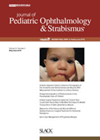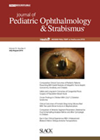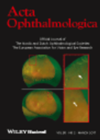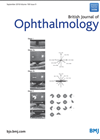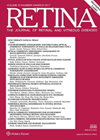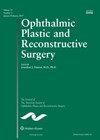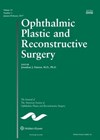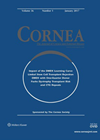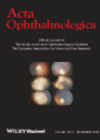
Journal Reviews archive for 2017
Surgery for horizontal nystagmus
The authors report two consecutive interventional surgical series in which the authors describe their experience with the Sinskey anterior extirpation procedure (SAEP) and a newly modified myectomy without reattachment (MWR). In a review of 39 patients, 20 underwent the SAEP...
Eyelid nodule outcomes
Idiopathic facial aseptic granuloma (IFAG) is a recently defined paediatric dermatology disorder. This study presents the clinical outcomes of children with IFAG nodules on their eyelids with or without facial nodules and aim to compare the outcomes with those presenting...
How many injections in nAMD: ranibizumab vs. aflibercept
Intravitreal anti-VEGF injections make up a large proportion of the workload in ophthalmology clinics. Since the introduction of aflibercept with eight weekly injections there has been an option to use a treatment which may require less treatment, with potential cost...
Vitrectomy after ocriplasmin for VVMT adhesion of MH study
This is a multicentre retrospective study of 51 eyes that received intravitreal ocriplasmin between January 2013 to January 2014 for symptomatic vitreomacular (VMT) +/- macular hole (MH), and then went on to PPV for persistent pathology, comparing a control group...
Treat and extend for PCV
This South Korean study investigated the efficacy of a treat and extend regimen (TER) using ranibizumab to treat polypoidal choroidal vasculopathy (PCV). Twenty-nine eyes were included in this retrospective case note review. Of these, five eyes had been treated with...
Preoperative RPE alterations in macular holes
This retrospective interventional case series from Japan assessed whether preoperative alterations of the retinal pigment epithelial (RPE) in idiopathic macular holes correlated with postoperative functional and morphological changes in the macula. Fifty-nine eyes had preoperative Spectralis OCT using the ‘detailed’...
Conjunctival mapping biopsies in sebaceous carcinoma
This is a retrospective review of conjunctival mapping biopsies in patients with periocular sebaceous cell carcinoma. The authors reviewed the biopsy technique and outcomes of 45 patients who had mapping biopsies performed over a 25-year period. A total of 429...
Reduction of postoperative bruising and swelling
This is a review of 27 patients undergoing periocular surgery who postoperatively applied hydrogel pads impregnated with Arnica montana and Ledum palustre (Ocumend, Cearna inc., Chicago). The pads were used continuously for the first two postoperative days, changing them every...
Systemic fungal infections and corneal transplants
This prospective study looked at corneal donors with positive medical history of systemic fungal infection (oral thrush or respiratory, urine, wound, sputum, bronchial, tracheal, or throat culture positive for fungus), to establish if the risk of post-keratoplasty fungal eye infections...
OCT in peripheral corneal thinning
This small retrospective study used high resolution optical coherence tomography (OCT) Heidelberg Spectralis to identify features which could determine the underlying aetiology of peripheral corneal thinning. Ten patients were included; five with diagnoses of degenerative peripheral thinning; Terrien’s marginal degeneration...
Quarter DMEK
This case report describes a novel technique where one quarter of Descemet’s membrane (DM) was transplanted during a quarter-descemet membrane endothelial keratoplasty (DMEK) procedure. DMEK graft was prepared from a 58-year-old corneo-scleral donor after one week in culture. Peripheral DM...
Does cornea cross-linkage reduce the rate of corneal transplants in keratoconus?
Cornea cross-linking (CXL) is a relatively new treatment in the management of keratoconus, which may help prevent the need for corneal transplant. This paper investigates if the introduction of corneal cross-linkage has reduced the number of corneal transplants performed annually...

